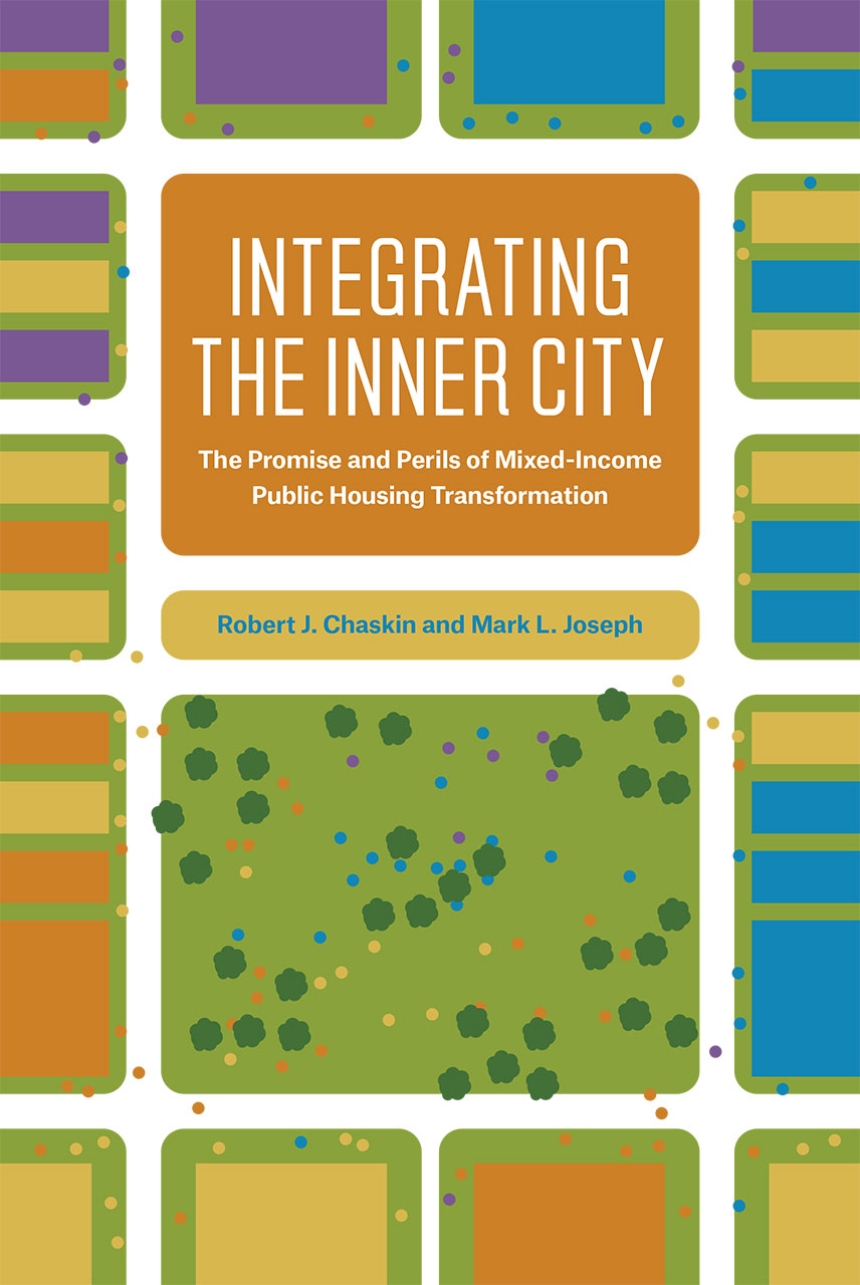Integrating the Inner City
The Promise and Perils of Mixed-Income Public Housing Transformation
9780226478197
9780226303901
Integrating the Inner City
The Promise and Perils of Mixed-Income Public Housing Transformation
For many years Chicago’s looming large-scale housing projects defined the city, and their demolition and redevelopment—via the Chicago Housing Authority’s Plan for Transformation—has been perhaps the most startling change in the city’s urban landscape in the last twenty years. The Plan, which reflects a broader policy effort to remake public housing in cities across the country, seeks to deconcentrate poverty by transforming high-poverty public housing complexes into mixed-income developments and thereby integrating once-isolated public housing residents into the social and economic fabric of the city. But is the Plan an ambitious example of urban regeneration or a not-so-veiled effort at gentrification?
In the most thorough examination of mixed-income public housing redevelopment to date, Robert J. Chaskin and Mark L. Joseph draw on five years of field research, in-depth interviews, and volumes of data to demonstrate that while considerable progress has been made in transforming the complexes physically, the integrationist goals of the policy have not been met. They provide a highly textured investigation into what it takes to design, finance, build, and populate a mixed-income development, and they illuminate the many challenges and limitations of the policy as a solution to urban poverty. Timely and relevant, Chaskin and Joseph’s findings raise concerns about the increased privatization of housing for the poor while providing a wide range of recommendations for a better way forward.
In the most thorough examination of mixed-income public housing redevelopment to date, Robert J. Chaskin and Mark L. Joseph draw on five years of field research, in-depth interviews, and volumes of data to demonstrate that while considerable progress has been made in transforming the complexes physically, the integrationist goals of the policy have not been met. They provide a highly textured investigation into what it takes to design, finance, build, and populate a mixed-income development, and they illuminate the many challenges and limitations of the policy as a solution to urban poverty. Timely and relevant, Chaskin and Joseph’s findings raise concerns about the increased privatization of housing for the poor while providing a wide range of recommendations for a better way forward.
363 pages | 18 halftones, 6 line drawings, 6 tables | 6 x 9 | © 2015
Geography: Urban Geography
History: Urban History
Sociology: Social Institutions, Urban and Rural Sociology
Reviews
Table of Contents
Prologue
Part One
1 Concentrated Poverty, Public Housing Reform, and the Promise of Integration
2 Theoretical Assumptions and Policy Orientations
3 Mixed-Income Development in Context: Urban Poverty, Community Development, and the Transformation of Public Housing
Part Two
4 Setting the Stage: The Neighborhood and Development Site Contexts
5 From Physical Transformation to Re-Creating Community: Development Strategies and Inputs
6 Does Social “Mix” Lead to Social Mixing? Emergent Community and the Nature of Social Interaction
7 Space, Place, and Social Control: Surveillance, Regulation, and Contested Community
8 Development, Neighborhood, and Civic Life: The Question of Broader Integration
9 The Promise and Perils of Mixed-Income Public Housing Transformation
Acknowledgments
Appendix: Methods and Data
Notes
References
Index
Part One
1 Concentrated Poverty, Public Housing Reform, and the Promise of Integration
2 Theoretical Assumptions and Policy Orientations
3 Mixed-Income Development in Context: Urban Poverty, Community Development, and the Transformation of Public Housing
Part Two
4 Setting the Stage: The Neighborhood and Development Site Contexts
5 From Physical Transformation to Re-Creating Community: Development Strategies and Inputs
6 Does Social “Mix” Lead to Social Mixing? Emergent Community and the Nature of Social Interaction
7 Space, Place, and Social Control: Surveillance, Regulation, and Contested Community
8 Development, Neighborhood, and Civic Life: The Question of Broader Integration
9 The Promise and Perils of Mixed-Income Public Housing Transformation
Acknowledgments
Appendix: Methods and Data
Notes
References
Index
Awards
Urban Affairs Association: Urban Affairs Association Best Book Award
Honorable Mention
